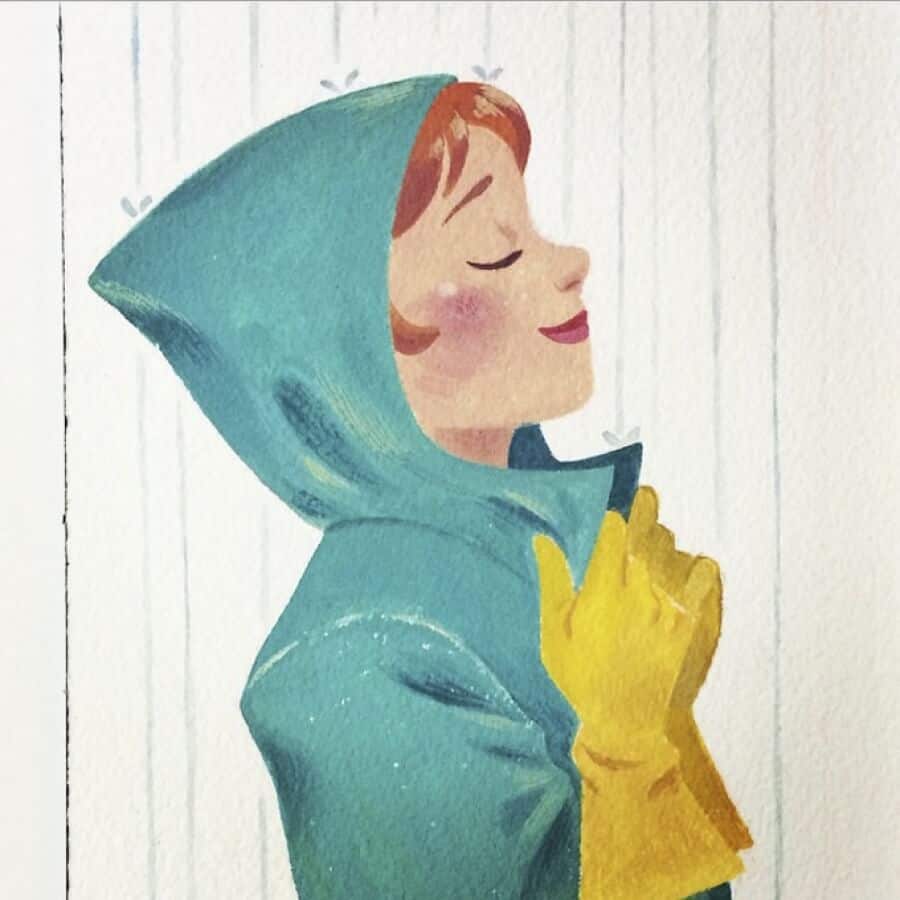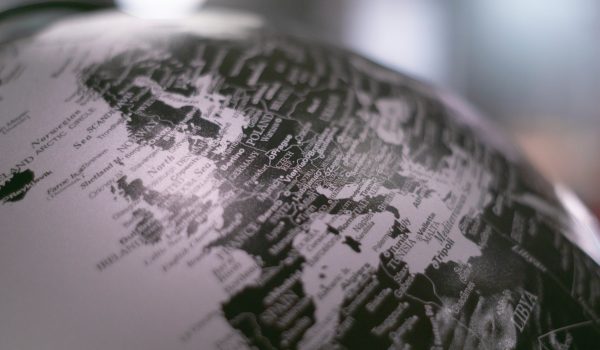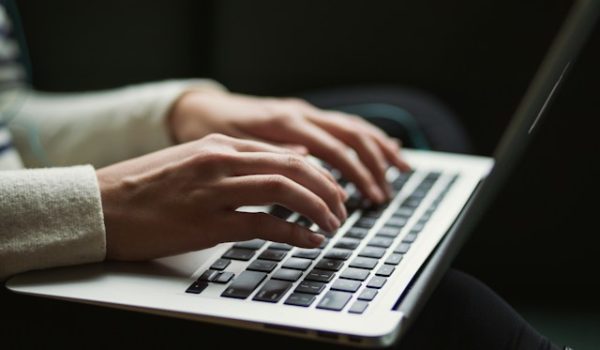Have you ever dreamed of making cartoons? Becoming part of this exciting and magical process? Most likely Yes, in your childhood, when you were the right age to watch Aladdin, The Little Mermaid, or The Lion King. The fantastic world of Disney is always breathtaking, inspiring, and impressive to the imaginations of not only children but also adults. What if your dream came true and you got a job at the Walt Disney Animation Studio? We ask Sunmee Joh a young story artist for Walt Disney.
How did you get started? Where did you study? What was your first job?
I actually didn’t know that I wanted to get into animation until after completing my first undergraduate studies in a non-art-related field. I wasn’t feeling fulfilled by the direction I was going, so I decided to pursue art because I had always loved it. While doing research on different art programs, I felt most drawn to animation, and subsequently spent time developing a portfolio. I applied and got accepted to CalArts (California Institute of the Arts) in the Character Animation program. Afterwards, my first job was as a Story Trainee at Walt Disney Animation Studios.
How did you begin your career as a story artist? I would like to hear any tips you have for aspiring artists!
After graduating from CalArts in 2012 I applied as a Story Trainee in the Walt Disney Animation Studios training program. Luckily I was accepted, and this became my official start in the animation industry. For aspiring artists, I would encourage developing your voice as an artist and trying to pursue what interests and inspires you the most. Never stop learning, and don’t be afraid of failure; it’s perfectly normal and essential for growth. Watch a lot of movies and shows, thinking about what you liked or didn’t like about them and specifically why. I would also highly recommend making a habit of taking your sketchbook with you wherever you go and sketching from real life as much as you can.
You are currently working as a story artist for Walt Disney. Tell us more about your experiences and life in general in this magical world.
So far my time at Disney has been a huge learning experience, in the best possible way. I’ve learned so much about storyboarding and working with others to make the best possible version of a story. I love that everyone tries their absolute best to create something special, and we all inspire and support each other. It is a very collaborative and inspiring environment
In general, my life as a story artist involves storyboarding, pitching, and participating in story meetings. Typically, I’ll receive a few script pages from the film directors, and it’ll be my job to visualize everything from shot to shot. This includes handling the acting, staging, and composition of a scene, and most importantly, bringing entertainment to it.
How did you get your first full assignment? What did it involve?
I received my first full assignment towards the later part of my training experience. I was given the opportunity to work on Moana while it was still in its earlier development stages. My assignment was to explore an idea that the directors had in mind for a particular scene. Since there weren’t any script pages for it at the time, the directors described in words what they were envisioning and from that I boarded a scene out of it.
What is the process of storyboarding a scene?
I’ve found that a big part of the process is brainstorming. After I get issued a new scene, I’ll spend a good amount of time thinking and doing research for it. Sometimes I can spend a whole day or two just thinking about the scene. Even though I have words from the script to work off of, there’s so much more to consider and bring to a written scene when translating it into visual form. It’s not just drawing what the script describes, but infusing as much entertainment and richness into the sequence of drawings as possible. Once I feel like I’ve processed everything in my mind, I’ll do a thumbnail pass of the whole scene. Then I’ll create an official, more fleshed-out version of it, which is what I’ll present to the directors and head of story. After getting their feedback and critique, I’ll do another pass on the scene based on their notes. This can happen up to a few more times before it gets fully approved.
What part of your work do you do on paper and what part digitally?
Most of my work at Disney is done digitally, but it’s important for me to do some on paper as well. When I’m in my initial thinking and research phase for a scene, I’ll go on the internet or look at resources available at work. Then I’ll start doing some loose drawings and thumbnails on paper. This is where I get all my thinking and exploring done. When I finally feel like I have a pretty good grasp of the scene, I’ll start drawing on the computer.
What tools do you use for your work?
For my full-time work I use a computer, online resources, cintiq, plain paper, and a fine black marker. For my personal work, I like to use ink and gouache on watercolor paper.

What research do you do for your personal illustrations?
I use the internet for most of my research. I usually look up real examples of whatever it is that I’d like to illustrate and do some studies based on them. I also like to look at other artists’ work and photography for inspiration.
What is hardest to draw?
I naturally lean towards drawing people most of the time, so for me I struggle with drawing environments, especially ones that involve buildings. It’s also challenging to draw a very specific emotion on a character, but I find it to be the most rewarding when you’re able to get it just right.
What are the no-noes when you board a scene for animation? Are there any common mistakes you can make?
I think a lot of things can go wrong if you don’t understand the point of the scene and don’t consider what the characters are thinking at any given moment. If you don’t communicate what the character is thinking, the story becomes difficult to engage in and you can lose your audience. Storyboarding involves juggling many different tasks at once, so it’s not uncommon to let something slip, even something as important as a character’s thinking. But fortunately, storyboarding is very collaborative, and everyone helps each other to notice anything that feels off and make the best scene possible.

What do you do to relax?
Exercise is a big one for me in terms of relaxing. Because I’m on the computer most of the time at work, I find that I need to get my body moving in order to unwind or release any stress that has built up. Doing things that are not animation-related also helps me to relax, whether it’s hanging out with friends, simply resting at home, or traveling.
Growing up, who were your favorite book/cartoon characters?
My favorite characters growing up were Ariel, Belle, Darkwing Duck, Sonic the Hedgehog, Batman, and Sailor Moon.
Who has been your biggest inspiration in life? And why?
My mom has been my biggest inspiration because she has always been a person of generosity, strength, and positivity all throughout her life, even through difficult situations. She has also supported me unwaveringly in everything that I wanted to pursue regardless of my changing direction countless times.

How important is the internet to your livelihood and for your inspiration?
I would say that the internet plays a very important part in what I do, both professionally and personally. I do most of my research through the internet, and it gives me access to so much inspirational content from around the world.
Do you have a favorite work of art?
I don’t have one particular favorite work of art, but my favorite body of work is probably that of Earl Oliver Hurst. I am always inspired by his fluid line work, sense of movement, and appealing designs.
What are you working on now?
I have just finished working on Moana and will be working on a different project soon.

Describe your morning routine.
My morning routine usually consists of driving to work and getting settled in my work space. I’ll start with checking emails and looking at my calendar to see what’s on the schedule for the day. Sometimes there are meetings throughout the day so I want to make sure I pace myself so that I can attend them. After I get a good sense for the day, I’ll begin working.
What advice would you give to newly graduated artists looking to establish themselves in the industry ?
As a new graduate I think it’s important to get your work out there and seen in whatever way possible. Websites and social media are a great platform for showcasing your work and a good way for other people to discover you. You never know who might come across your work, and a lot of people receive opportunities simply because someone saw their work on the internet. Don’t wait for an opportunity to arise first in order to start building your portfolio; have your portfolio ready in case a position suddenly opens up. I also feel it’s important to create work that feels true to you and reflects what inspires you. In this way your work will be unique and really help you stand out.
Lastly, a big thing to keep in mind is to not worry too much if things don’t turn out the way you had hoped. Even if you feel like you couldn’t get the job you wanted once or even multiple times, don’t give up. There will always be more opportunities ahead. It can often be tempting to compare yourself to your peers or to other people who seem more successful than you, don’t let this get to you. I’ve found that everyone has their own path, and there is absolutely nothing wrong with that. Some of my classmates didn’t get jobs right away, but they all eventually found their place in the industry and are happy with where they are now.

What would be your ultimate goal as an artist?
I’m not entirely sure what my ultimate goal would be, but for now I hope to continue to learn and grow as much as possible, so that I can help create stories and art that people can truly enjoy.
Support us!
All your donations will be used to pay the magazine’s journalists and to support the ongoing costs of maintaining the site.
Share this post
Interested in co-operating with us?
We are open to co-operation from writers and businesses alike. You can reach us on our email at cooperations@youthtimemag.com/magazine@youthtimemag.com and we will get back to you as quick as we can.









